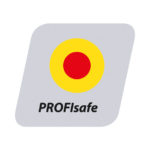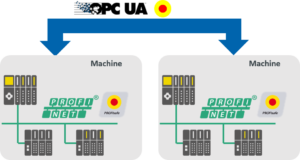 When it comes to functional safety, there is no room for compromise. It must always be top priority whenever an industrial plant or machine is planned, built, or operated. This is not only in the interest of the affected persons, but also makes sense from a business point of view: when the risk of accidents is correctly accounted for, systems equipped with modern safety technology have a much lower total cost of ownership than unprotected ones.
When it comes to functional safety, there is no room for compromise. It must always be top priority whenever an industrial plant or machine is planned, built, or operated. This is not only in the interest of the affected persons, but also makes sense from a business point of view: when the risk of accidents is correctly accounted for, systems equipped with modern safety technology have a much lower total cost of ownership than unprotected ones.
PI has a long tradition in functional safety. Its trailblazing PROFIsafe standard makes it possible to transmit safety-critical process data over the same communication channel that is used for standard-data, be it PROFIBUS or PROFINET, over all physical layers, including wireless communication. This allows for efficient communication between safety devices, such as safe IO, safety-PLCs, or drives with safety functions. Expensive, additional safety-networks have become obsolete.
 Nowadays, more than 11 million PROFIsafe-devices have been sold, clearly making it the most common safety protocol in the world. It is used both in factory automation and the process industry, but also in cranes, wind-turbines, railways, cable cars, funiculars, entertainment rides, and in science. Did you know, for instance, that the emergency elevator within the Statue of Liberty in New York, and the Large Hadron Collider at CERN in Switzerland, both comprise safety functions realized with PROFIsafe?
Nowadays, more than 11 million PROFIsafe-devices have been sold, clearly making it the most common safety protocol in the world. It is used both in factory automation and the process industry, but also in cranes, wind-turbines, railways, cable cars, funiculars, entertainment rides, and in science. Did you know, for instance, that the emergency elevator within the Statue of Liberty in New York, and the Large Hadron Collider at CERN in Switzerland, both comprise safety functions realized with PROFIsafe?
Being an international standard (IEC61784-3-3), PROFIsafe is open to everybody. This makes it easier for small and medium-sized companies to develop safety-devices, in turn, promoting competition for the benefit of the end customers. Moreover, PROFIBUS and PROFINET International actively supports developers by providing the PROFIsafe Certified Designer Training and a Certification Test Service via approved PI Test Labs. The PROFIsafe Test Specification exactly defines the tests necessary to show the correct implementation of PROFIsafe, making the required certification process in the test labs as transparent as possible. On a regular basis, events are organized to foster the exchange of experience and good engineering practice.
 PROFIsafe is continuously being improved. Currently, a new maintenance update of PROFIsafe V2.6 is planned, which will contain novel optional features, such as a so-called base-ID, that will allow cloning of series machines without having to update all PROFIsafe code-names in each instance of the machine. In the joint working group “OPC UA Safety”, PI is working together with the OPC Foundation to transfer PROFIsafe technology from the field level to the controller level. Thus, controllers from different vendors will be able to communicate with each other, using the well established PROFIsafe technology. This will efficiently interconnect different safety-ecosystems, and thus further improve interoperability.
PROFIsafe is continuously being improved. Currently, a new maintenance update of PROFIsafe V2.6 is planned, which will contain novel optional features, such as a so-called base-ID, that will allow cloning of series machines without having to update all PROFIsafe code-names in each instance of the machine. In the joint working group “OPC UA Safety”, PI is working together with the OPC Foundation to transfer PROFIsafe technology from the field level to the controller level. Thus, controllers from different vendors will be able to communicate with each other, using the well established PROFIsafe technology. This will efficiently interconnect different safety-ecosystems, and thus further improve interoperability.
Never forget that safety technology is enabling technology. In 1853, Elisha Otis presented a safety locking device for elevators. Because nobody would use personal elevators if it had not been for this important invention, this was the enabler for buildings with more than a few stories. So, in conclusion, it was the invention of this safety device that brought us the skylines of Chicago and New York, and the skyscrapers of today’s mega-cities all over the world.
What is your next enabling safety product?
 Dr. Max Walter
Dr. Max Walter
Chair, PROFIsafe (PI) Working Group
Chair, OPC UA Safety (PI/OPCF) Working Group
